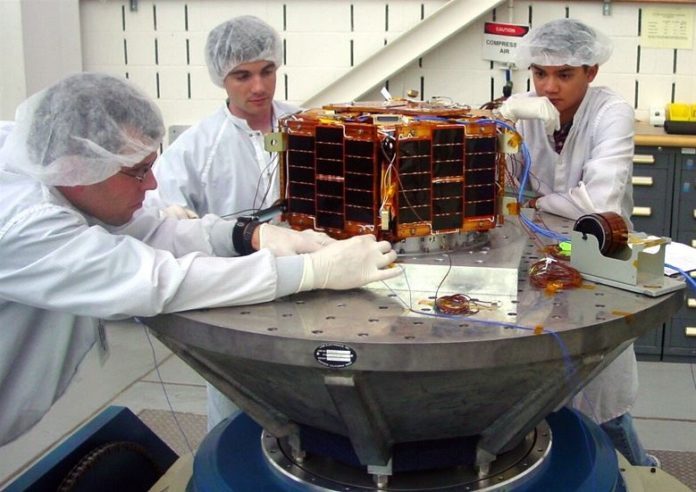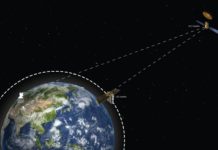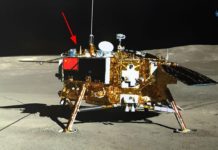The cost of making small satellites is coming down and hence there is an exploding demand for launching such satellites. There is also a move by small satellite players to cover the earth with constellations of small satellites, analyse the data produced and monetise the information. Hence existing and new players in the launch vehicle market are tailoring their offerings or creating new ones to cater to the demands of this new market. There is no better time than now to look at these players and what they offer to this segment of the market.
There are many players that are competing in this market space to cater to the small satellite boom. These small players will also face competition from the big players in the form of ride share on bigger vehicles. As there are many requirements like low cost, reduced time to launch, and specific orbit requirements from these small satellite makers, there is likely to be room for many launch vehicle players to take a piece of the pie if they address these specific requirements.
Here we look at small launch vehicles that are expected to be ready by 2021 that can launch 500kgs or less to Low Earth Orbit (LEO).
ARION – 2 by PLD Space
Spanish company PLD Space’s launch program has the backing of both the European Commission and the European Space Agency (ESA). Its launch vehicle ARION – 2 is a liquid propelled three-stage launch vehicle. The first stage is capable of reuse several times to keep launch costs low. The payload can be up to a maximum of 150kgs to 400km LEO. Test flight is planned for middle of 2020 and commercial flights are planned for 2021.
Electron by Rocket Lab
Having completed a successful launch in January 2018 and with options for multiple launch sites, Rocket Lab is more than ready to take advantage of the small satellite launch market space. The Electron is a two-stage launcher that uses an innovative electric pump-fed engine, one of the first to do it on a vehicle that has reached orbit. It can use an optional third kick stage with an engine called Curie that is capable of multiple burns, giving them flexibility in orbit insertion. It can launch a payload of between 150kg to 225kg to a 500km Sun Synchronous Orbit (SSO). Cost per launch is expected to be around US$6 million. They are capable of having around 100 launches a year, considering their multiple launch sites.
Eris by Gilmour Space Technologies
The Eris launch vehicle is manufactured by Gilmour Space Technologies based in Queensland Australia, with an office in Singapore. It is a 3-stage vehicle that uses a proprietary hybrid rocket fuel technology and one of the first use 3D-printed rocket fuel. The Eris orbital launch vehicle is expected to launch payloads of up to 400kgs to LEO. Estimated cost per kg of payload is expected to be US$25,000 to $38,000. The vehicle is expected to be ready for commercial launches by fourth quarter of 2020.
Kuaizhou 1A by ExPace
Kuaizhou 1A manufactured by ExPace, a subsidiary of China Aerospace Science and Industry Corporation (CASIC), has already had a successful launch in January 2017 that put 3 small satellites in polar orbit and ready to go. It is a three-stage solid stage rocket with a liquid fuelled fourth stage as part of the satellite system. Payload capability is 300kgs to LEO, 250kgs to 500km SSO or 200kgs to 700kms SSO. Expected payload cost is US$10,000 per kg.
LauncherOne by Virgin Orbit
Among all the launchers LauncherOne by Virgin Orbit is special in that it will be an air launch to orbit rocket. The two-stage launch vehicle itself will be carried by a Boeing 747-400 aircraft and air launched at an altitude of 11kms. Then the rocket will propel itself and launch the payload in a Sun Synchronous Orbit (SSO). The capability is to launch 500kg payload to a 230km SSO or 300kg to a 500km SSO. They are planning to have their first launch in 2018. Cost of each launch is expected to be between US$10 to $12 million. They expect to be able to perform 24 launches a year.
New Line 1 by Link Space
New Line 1 is a 2-stage liquid fuelled (kerosene and liquid oxygen) launch vehicle from Link Space Aerospace Technology, China. The first stage can be reused. It will allow a payload of 200kg to SSO of 250kms to 550kms. Their first launch is planned for 2020. The launch cost is very competitive and is expected to be US$4.5 million for the expendable vehicle and US$2.5 million for the vehicle with reused first stage.
Mini PSLV (SSLV) by ISRO
Mini PSLV or Small Satellite Launch Vehicle (SSLV) by the Indian Space Research Organisation (ISRO) and commercialized by Antrix will be smaller version of their PSLV rocket. It is expected to be a 2-stage vehicle of solid propellant stages with an optional third stage if needed, based on payload requirements. ISRO says it can reduce the turn-around time between launches to 3 days. At an expected cost of US$3 to $5 million per launch, it is one of the lowest cost vehicles. Payload supported is 500kgs or less to LEO. It is expected to be ready by early 2019.
OS-M by One Space Technology
One Space Technology is a Chinese private space launch company that makes the OS-M series of small satellite launchers. Their first launch is scheduled for Q4 2018. The OS-M1 can have a payload of 205kgs to 300km LEO. The OS-M2 with 2 boosters can have a payload of 390kgs to LEO and 204kgs to 800km SSO for Block A and 505kgs to LEO and 274kgs to 800km SSO for Block B. They also are planning the OS-M4 with 4 boosters for satellites weighing greater than 500kgs.
Vector-H and Vector-R by Vector Space Systems
Vector-H developed by Vector Space Systems, USA, is a two-stage vehicle that is capable of delivering 95kgs to 1000km SSO or 160kgs to LEO. An optional third solid stage can also be used to launch the satellite to a higher orbit, if required. Cost is expected to be around US$3.5 to 4.5 million per launch. They expect to perform around 100 launches per year. Currently they are planning their first launch in 2019. Their Vector-R is also a two-stage vehicle that is capable of sending a payload of 26kgs to a 1000km SSO or 65kgs to LEO. Cost per launch of the Vector-R is expected to be between US$2 and 3 million.
Other than the ones listed above, a number of other launch vehicle manufacturers are looking to cater to the small satellite market. Examples include Equatorial Space Industries in Singapore targeting a 2019 launch date, Independence-X in Malaysia targeting 2023, and Bellatrix Aerospace in India, targeting a 2022 launch date. Some others are catering to the >500kg launch market, such as US-based Firefly Aerospace.
The next few years will tell us how these developments will take shape. Most launch costs are expected costs and will undergo some changes until the first few launches. As reusability increases for these vehicles, launch costs are expected to decrease considerably. Also, there may be new players with better technologies and innovative ideas to make disruptive changes in this market space.







